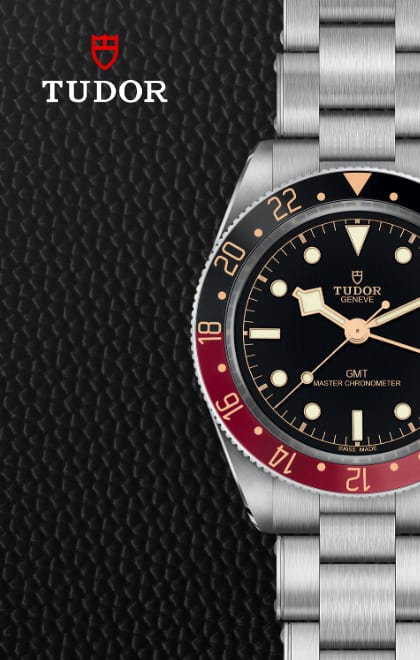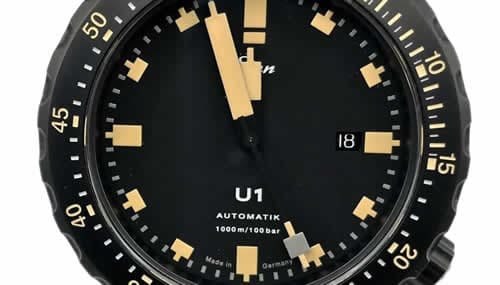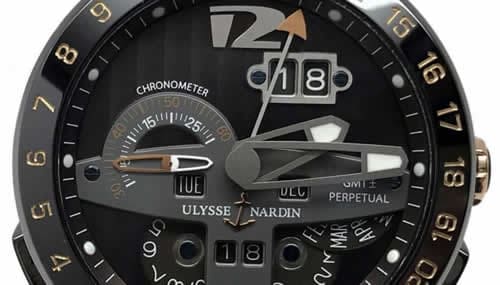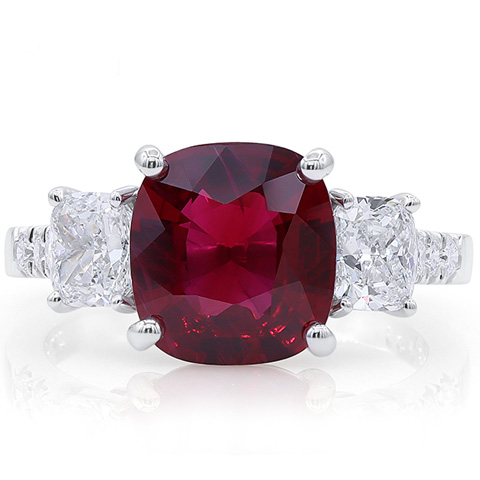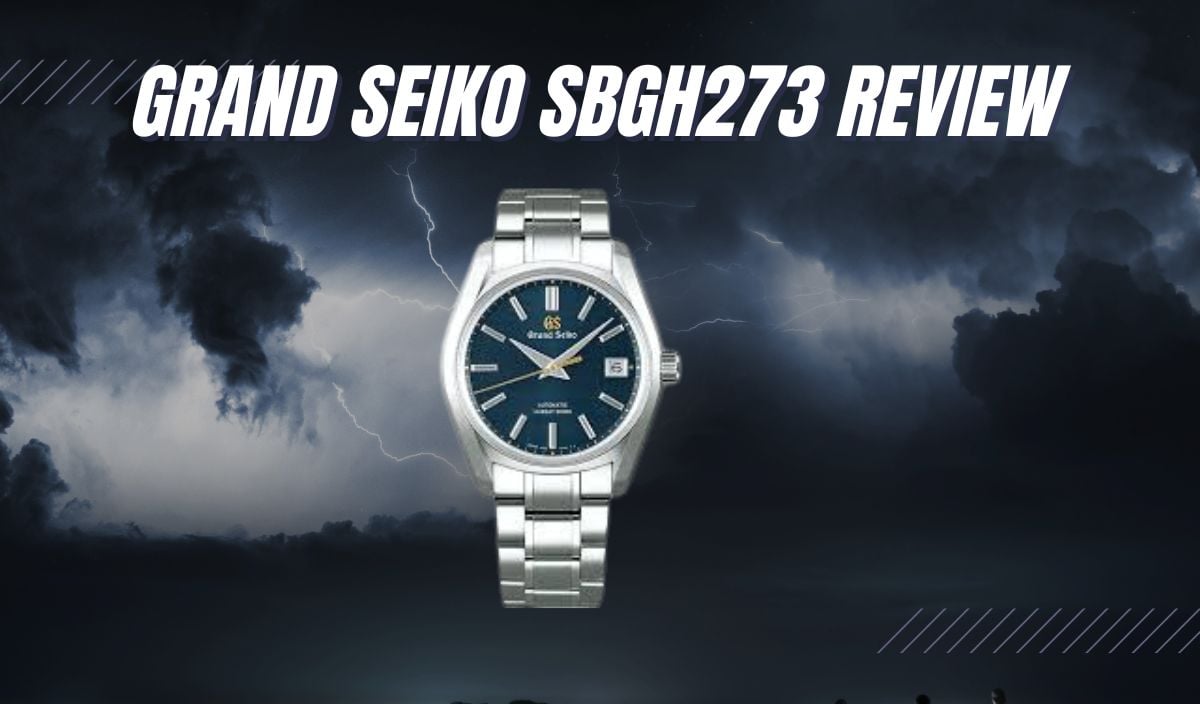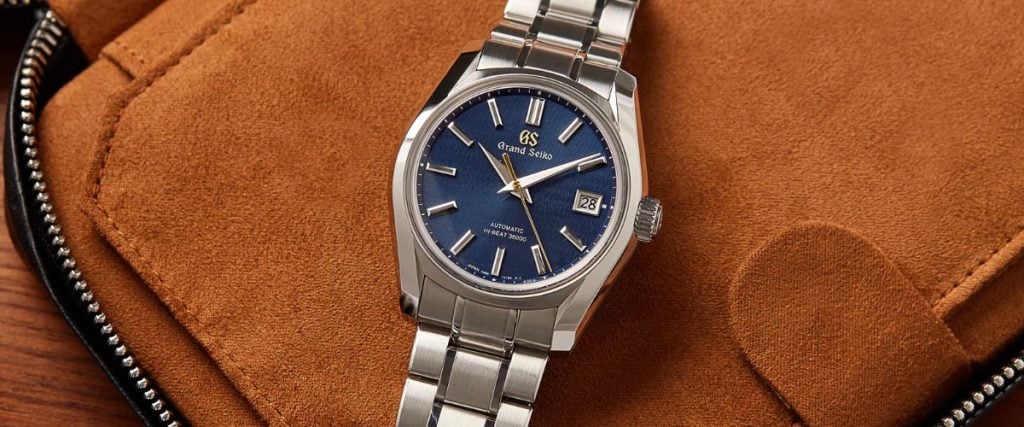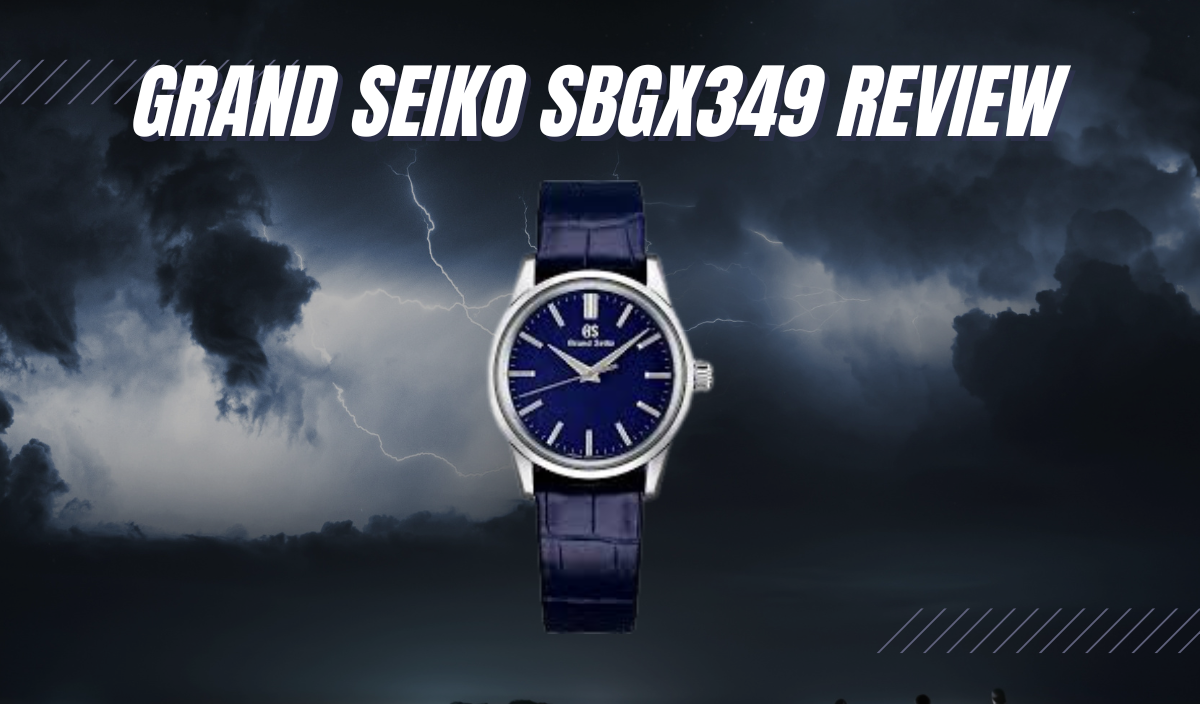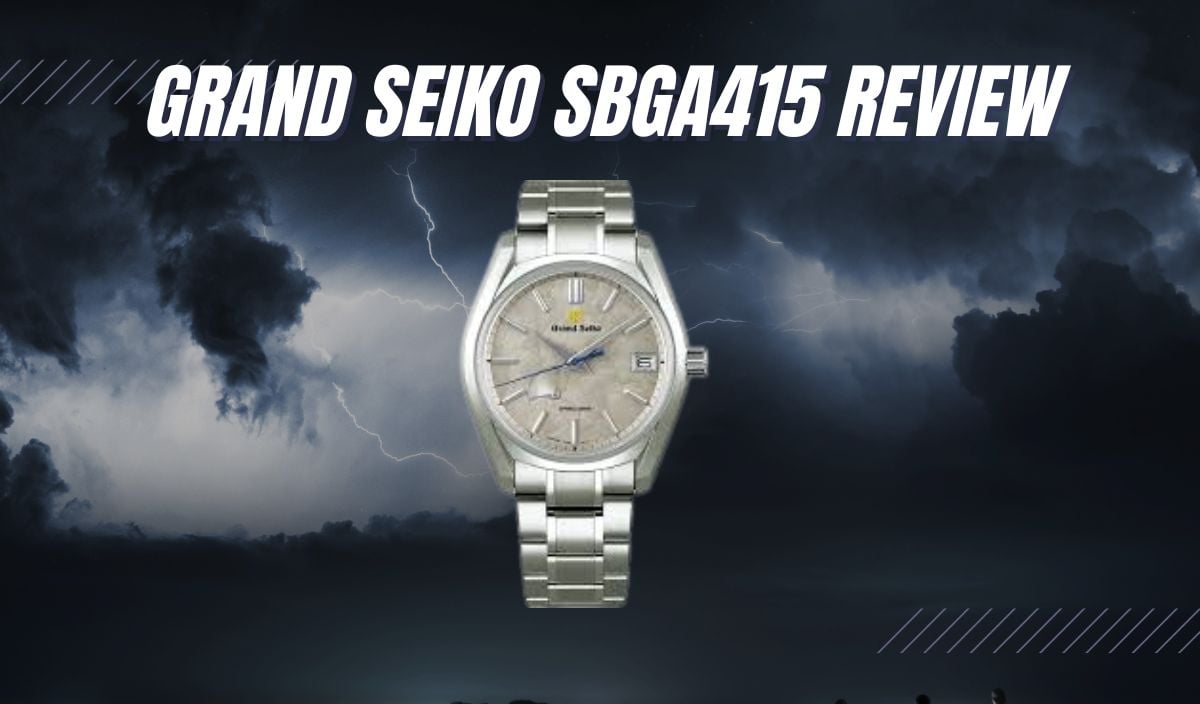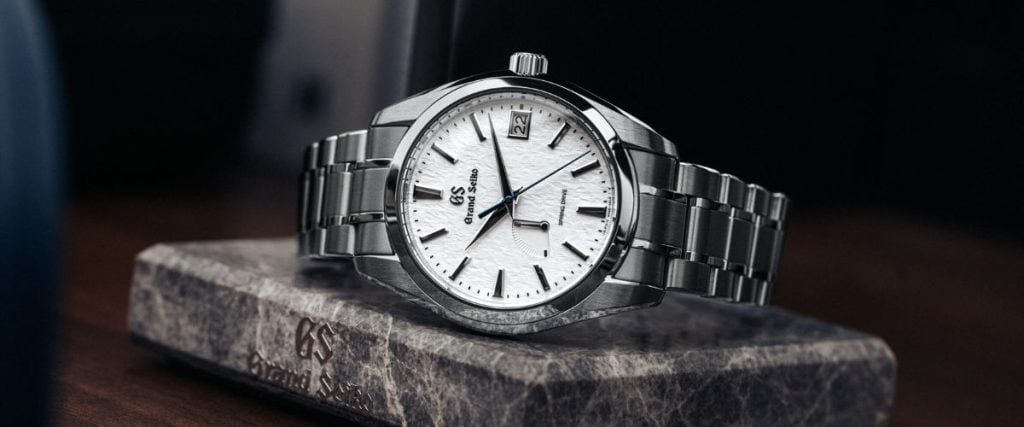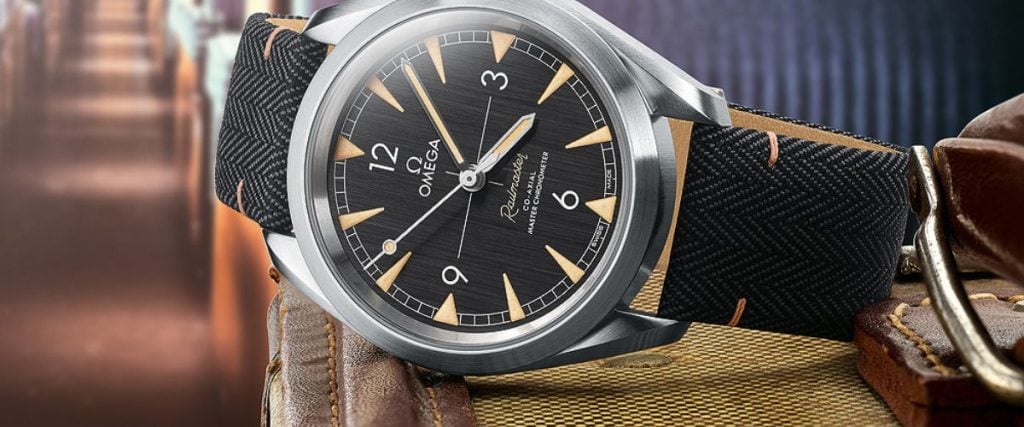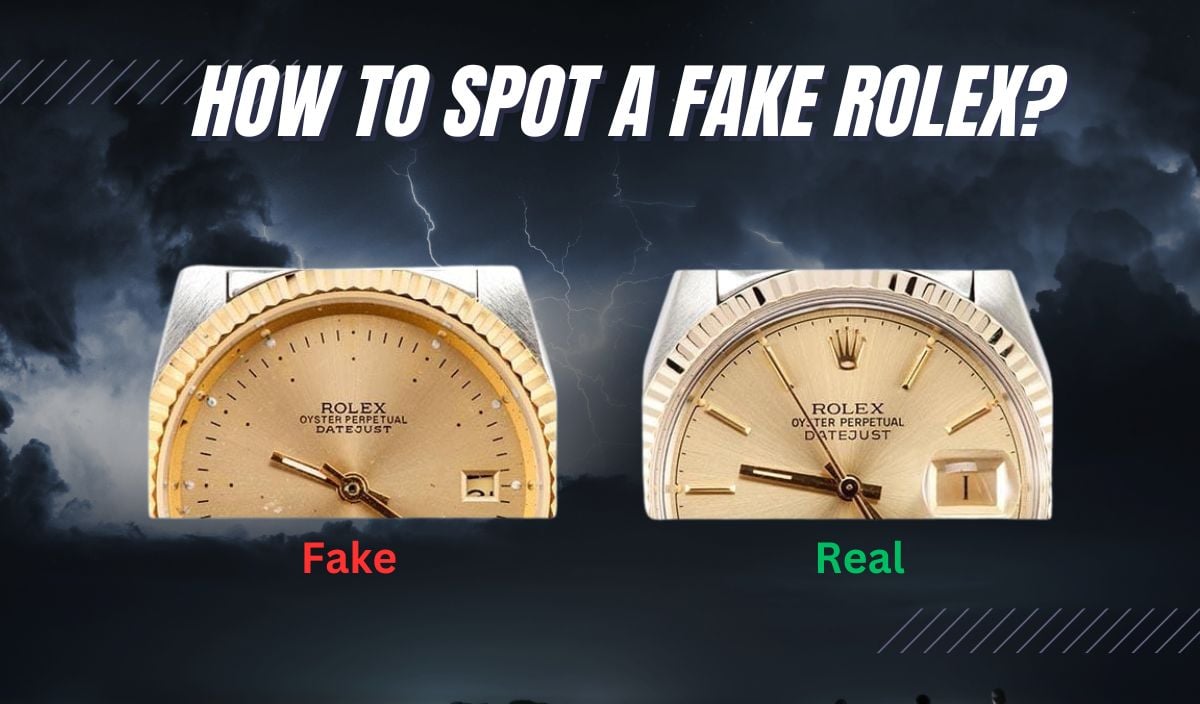
You’ve seen it before: a green backdrop, the iconic crown, the gold embossed lettering. Rolex is arguably the most recognizable brand in the world. Unfortunately, such notoriety and success come with its downsides.
And though they say imitation is the greatest form of flattery, nobody wants to spend many thousands of dollars on a watch only to later find out—or perhaps they never will—that they were duped into buying a fake.
And yet, in my relatively short time as a watch enthusiast, I’ve spotted more fake Rolexes than I’d care to admit. But here at Exquisite Timepieces, we are in the business of not only selling watches but of protecting our customers. We care about preserving the industry from the duplicitous sellers that have spread across the industry like a virus.
So sit tight, grab your favorite drink, and let’s discuss the surefire ways to spot a fake Rolex.
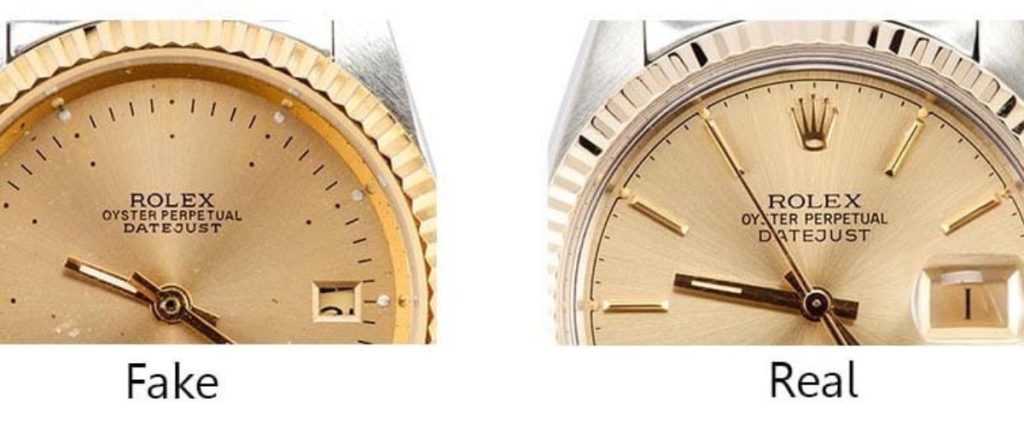
Why There Are So Many Fake Rolex Watches
There is no way to accurately quantify the amount of fake Rolex watches in the wild. Even the most conservative of estimations claim that for every genuine Rolex, there are between 10 and 20 counterfeit ones. With Rolex making about 1 million watches per year, there are likely hundreds of millions of fake Rolex watches in the world.
So yeah—I don’t need to tell you that there are a lot of fake Rolexes. If you take a walk through Chinatown in NYC, you’ll come across various vendors selling imitation Rolex watches. You might have an uncle Tony who loves to brandish a fake, iced-out Presidential. Or maybe curiosity has gotten the best of you, and you’ve browsed the loads of fakes available via the online Asian markets.
Rolex isn’t just a watch—it’s a symbol of success, elegance, and prestige. The brand’s global reputation has created a high demand, which counterfeiters are more than eager to exploit. The sheer volume of fakes on the market stems from the allure of owning a luxury timepiece without the accompanying price tag.
The average person might recognize a few well-known Swiss watch brands, but almost everyone can identify a Rolex. In a world where people often flaunt success and wealth—sometimes without the means to back it up—social media is overflowing with pretenders. Wearing a fake Rolex is just another form of that same illusion, a symbol of the desire to appear successful at any cost.
12 Ways to Tell If a Rolex is Real
Here are 12 indicators you can look at to make sure your Rolex is real.
Reputable Dealer
Because of the sheer amount of fake Rolex watches, it is of paramount importance to do your homework before purchasing a Rolex watch—new or used. The internet is a great black hole of misinformation and shady sellers, so if considering a new Rolex, always go through an authorized dealer of Rolex. This is the best way to ensure you are getting a 100% authentic Rolex, along with its full warranty and brand experience.
If you have a question about that old Rolex sitting in your sock drawer, an AD can also provide authentication services. It’s equally important to consider the seller when considering a pre-owned Rolex. Here at Exquisite Timepieces, all of our pre-owned watches go through rigorous testing and authentication to ensure that your buying experience is as worry-free as possible. We have a wonderful collection of pre-owned Rolex watches for sale on our website. Whatever you choose, owning a piece of the crown is a great way to enjoy the wonders of horology!
Watch Price
Have you walked into a Rolex boutique and tried to negotiate the price on a watch—that is if they even have the watch you are looking for, which is nearly impossible in this day and age? They would laugh you out of the store. Rolex does not negotiate prices. You pay the MSRP, period.
So, if someone is offering you a Daytona for 50% of the retail price, it’s fake. If the price seems too good to be true, it’s fake. Always have realistic expectations when it comes to purchasing highly sought-after luxury goods. Ask yourself: Why would someone be offering this watch at such a deep discount?
Watch Weight
A reliable way to spot a fake Rolex is by checking its weight—authentic Rolex watches are almost always heavier than counterfeits. This is because genuine Rolex timepieces are constructed from premium materials, such as 904L stainless steel, 18k gold, or 950 platinum in more recent models. Older Rolex watches might feature 9k or 14k gold, gold shell, or 316L stainless steel before the brand transitioned to 904L steel.
On the other hand, counterfeit Rolexes are typically made with cheaper, lower-quality materials, making them lighter, less durable, and generally inferior in condition compared to the real thing.
Movement
One of the most distinctive features of a Rolex is its movement. The second hand of a Rolex should move smoothly, almost gliding across the dial. If the second hand ticks or stutters, that’s a strong indicator of a fake. New Rolex movements go through stringent standards, achieving the certification of Superlative Chronometer, demonstrating precision of +/- 2 seconds per day.
If you have a newly purchased Rolex that doesn’t achieve this level of accuracy, you either have a watch in need of service or a fake. A professional watchmaker can confirm whether the movement inside the watch is genuine. However, with the advent of super clones, black market manufacturers are crossing their t’s and dotting their i’s when it comes to recreating a movement that at least appears to be indistinguishable from a genuine Rolex.
Caseback
Most Rolex casebacks are pretty simple, usually just a combination of brushed or polished metal with no engravings, logos, or fancy designs. Unlike some other luxury watch brands, you won’t typically find a clear window on the back of a Rolex to show off the movement. But there are a few exceptions—some vintage models and special editions might break the rule.
Plus, with newer models like the platinum Daytona, Rolex has started to offer exhibition casebacks, giving a peek at the intricate inner workings. And for authenticity, Rolex often includes a green hologram sticker on the caseback with a crown, serial number, and a cool 3D “ROLEX” pattern that shifts depending on the viewing angle.
Cyclops
Many Rolex models with a date display include a feature known as the Cyclops lens. This is a convex lens positioned directly over the date window on the watch’s crystal. The lens magnifies the date by 2.5 times, enhancing its legibility. Like the watch’s crystal, the Cyclops lens is crafted from sapphire, making it both durable and scratch-resistant. Many fake Rolex watches have an incorrectly placed and magnified cyclops lens.
I once had a buddy of mine show me his “brand new” Submariner. When I analyzed the dial, my eye was immediately drawn to the cyclops lens. The date was not magnified enough—or at all really—and the cyclops was just a hair off-center.
Crown Markings
Make no mistake: Rolex is meticulous about their crowns and their design and execution. On many fake models, the etched crown is usually smoother or flatter to the touch, while on a genuine Rolex, they protrude outward. A professional will often scrutinize the crown markings with a jewelers loop, not only to ensure that it is crisp and sharp but also to check the spacings of any markings beneath the crown. Rolex crowns have dots under the logo that indicate the watch’s water resistance and specific variations that coincide with case material.
Three dots mean it has a Triplock crown, giving it extra water resistance, usually up to 300 meters, and are found on models like the Submariner, Sea-Dweller, and some GMT-Master IIs. Two dots signal a Twinlock crown, typically providing up to 100 meters of water resistance, often seen on models like the Datejust or Oyster Perpetual. There’s also a single dot or a line on some crowns, usually indicating a variation of the Twinlock crown, often found on vintage or less water-resistant models. The number of dots varies depending on the model and its water resistance features.
Serial Numbers
Every Rolex watch has a unique serial number engraved with precision between the lugs at the 6 o’clock position. The engraving should be sharp, clear, and not etched or printed. In fact, Rolex engraves serial numbers using high-precision laser engraving techniques, and counterfeiters often overlook this as most people don’t even know how to remove the bracelet on their watch to check the quality of the engraving!
Furthermore, the serial number should match the documentation that comes with the watch, though it’s worth considering that fake watch manufacturers often source genuine serial numbers to inscribe on their watches. Rolex can assist in cross-referencing serial numbers to help verify your watch, but it’s worth mentioning that serial numbers alone are not enough to authenticate a timepiece. Most of the time, Rolex will have to open the watch and look at the movement.
Dial Details
Distinguishing a real Rolex from a counterfeit just by examining the dial can be quite difficult. Some fakes have atrocious dials with mismatched text, scratched indices, specs of dust, incorrect fonts, or some other example of subpar manufacturing. Keep in mind, folks, Rolex has been in the horology business for a long time.
They have very stringent manufacturing standards, and you can expect a watch that is visually perfect to the human eye. And while most fakes can be quickly spotted via dial details, they are getting better and better, with the newest super clones being nearly perfect. When in doubt, always have a dial inspected by a professional!
Hands
When checking if a Rolex is fake, the hands can reveal a lot. First, take a look at the second hand. On a real Rolex, it moves smoothly around the dial, almost like it’s gliding. If you see a noticeable ticking motion, that’s a red flag. Next, check how the hands align with the markers. They should point exactly where they’re supposed to—any misalignment is suspicious.
Also, pay attention to the shape and finish of the hands. Rolex hands are made with precision, so they should have smooth edges and a flawless finish. If they look rough or poorly finished, something’s off. The material is another clue. Authentic Rolex hands are made from high-quality materials like gold or polished steel. If they look cheap or show signs of tarnish, that’s a bad sign.
If the watch has luminescent hands, the glow should be even and well-applied. Sloppy or uneven lume can indicate a fake. I say “can” because I had a friend who had a brand new Submariner, purchased from an AD, with a tiny spec of lume imperfection at the 7 o’clock indice.
I assured my buddy that Rolex would certainly fix it if he brought it back to the AD, but he decided to wait until he serviced that watch. Finally, for models with chronographs, the hands should start, stop, and reset smoothly. Any stuttering or misalignment could mean it’s not the real deal. In the end, paying attention to these details can help you spot a fake Rolex quickly.
Crystal Etching
Rolex started laser-etching its sapphire crystals around 2001 to deter counterfeiters. In the right lighting, you can just make out a tiny crown logo at the 6 o’clock position on the crystal. This detail is almost invisible to the naked eye and may require a loupe to see clearly. Counterfeiters often miss this or fail to replicate it accurately.
If the etching is absent or poorly done, the watch is likely a fake. One of the reasons why this etching is so difficult to replicate is because it is actually inside of the crystal and not just on the surface. This is incredibly expensive to manufacture without the proper machinery, and as such even the best super clones often have bad crystal etching.
Water Resistance
Did your 300m Rolex Submariner fail in the kiddy pool? Do you see fog on the inside of the glass or beads of water on the dial? This is likely an indication of a fake Rolex—or a genuine one in need of immediate servicing! Rolex watches are designed to be water-resistant, and this feature is rigorously tested at the factory.
While I wouldn’t recommend testing this yourself, having a professional watchmaker test the water resistance is a good idea. Counterfeit watches often fail this test because they aren’t built to the same stringent standards as a genuine Rolex. Lack of water resistance is a significant red flag.
Why You Shouldn’t Buy Fake Rolex Watches
I have to be realistic. No amount of literature or logic will dissuade somebody dead-set on acquiring a counterfeit watch. Some people have their minds made up. They are looking to flaunt wealth and success and don’t much care for the ten thousand dollar price tag associated with doing so. There is something to be said for the factories putting out these counterfeit products. They are often poorly run with plenty of human rights violations.
There is also something to be said about the blurring of the lines between real and fake. With the advent of AI technology, it is becoming difficult to discern real from fake. It’s never a good idea to play into this “blurring” but rather to celebrate authenticity and human ingenuity. If you can’t afford a Rolex but you really want one, consider the pre-owned market.
Finally, you are going to look like a fool when someone who knows watches, a colleague, business partner, maybe even your boss, asks to look at your watch. Don’t be the guy peddling a fake as the real thing. You’ll look like an idiot.
Conclusion
By taking the time to educate yourself and carefully examine any Rolex you’re considering, you ensure that you’re not just buying a watch but a genuine piece of history. A real Rolex is a lifelong companion that can be passed down through generations. Don’t settle for less. Wearing the crown is a costly endeavor, but that ensures a quality timepiece that symbolizes its wearer’s commitment to genuine quality.


